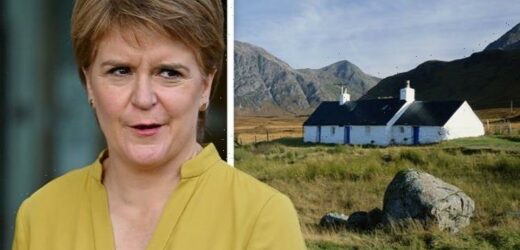BBC Breakfast: Dan Walker says beavers are ‘very clever’
We use your sign-up to provide content in ways you’ve consented to and to improve our understanding of you. This may include adverts from us and 3rd parties based on our understanding. You can unsubscribe at any time. More info
The British countryside is a gem and there is nothing quite like it anywhere else in the world, according to the Game and Wildlife Conservation Trust (GWCT). Unlike the sweeping planes of the Serengeti or the unblemished wilderness of the Sierra Mountains, Britain’s land has been worked for thousands of years – and you can see it. The UK’s total land area amounts to about 24 million hectares, of which about 75 percent is presently used for farming.
The staggering impact agriculture has had on shaping the countryside means the wildlife that once roamed Britain’s ancient woodlands now shares the land with Britain’s farmers.
Campaigners, consequently, believe working closely with farmers has to be at the heart of all future conservation efforts – and some believe Scotland is lacking in this department.
According to Andrew Gilruth, Director of Membership at the GWCT, England has seen great success in preserving the countryside at a grassroots level.
The success stems from the simple realisation farmers know the lay of the land better than any government bureaucrat ever will and they will not take kindly to someone telling them what to do.


The key is to work from the bottom up through farmer groups and not the other way around.
Mr Gilruth told Express.co.uk: “People only ever tell them what they should be doing and no one ever asks, ‘Well what species do you want to protect?’
“Then when they get going the ambition is phenomenal.
“So they don’t just talk about birds, they start talking about reptiles and other things, which they remember from their childhood which simply don’t exist in that area anymore.
“But once they’ve decided what they want, then you can advise them on how to get those species back.”
Amanda Owen helps to rehydrate a tawny owlet
Governments run the risk of paying too much attention to nature reserves, according to the expert, and not enough to the countryside and its farmers.
The countryside is, after all, home to an incredibly diverse array of species.
From red deer to minks and buzzards and voles, many of these species are often found on farmers’ doorsteps.
Mr Gilruth said: “It’s about letting those farmers know that, yes this is the right thing to do, rather than basically giving up on the farmers and saying, ‘Well don’t worry about it, if I want to see some wildlife I’ll just go to a nature reserve.’
“And this is certainly an issue in Scotland.


“There’s this quasi-Scottish government policy to no longer worry about the wildlife on the farms because, ‘We’ll wait till it’s all retreated to the nature reserves and we’ll go and have a look at it there.’
“That’s quite a worrying thing.”
Ultimately, the expert added, only farmers have the resources to properly tackle these issues and this is an approach that has been proven to work.
The Scottish government works closely with groups like Scottish Natural Heritage to help manage wildlife across the country.
The work includes the management of species such as geese and deer, as well as the reintroduction of extinct species.
The white-tailed eagle, for example, went extinct in Scotland in 1917 but attempts have been made to reintroduce the species in 1975, 1985, 1993 and 1998, as well as more recently in 2007 and 2012.
Similarly, the Scottish government reintroduced beavers in Knapdale Forest in Argyll in 2009 as part of a five-year trial.
Other groups like the Scottish Wildlife Trust have called for more sustainable farming practices that take into account the impact they have on the environment and wildlife.
In a policy paper published in June 2017, the trust encouraged so-called land sharing – a method of farming that integrates food production and conservation.
The trust said: “Given that 80 percent of Scotland’s land area is used for agriculture, and the majority of the small remaining area of seminatural habitats in Scotland are not suitable for farming, the emphasis here will be on land-sharing, and also on restoring
and rewilding of some of our most marginal agricultural land (reverse land-sparing).”
Express.co.uk has asked the Scottish government to comment.
Source: Read Full Article

